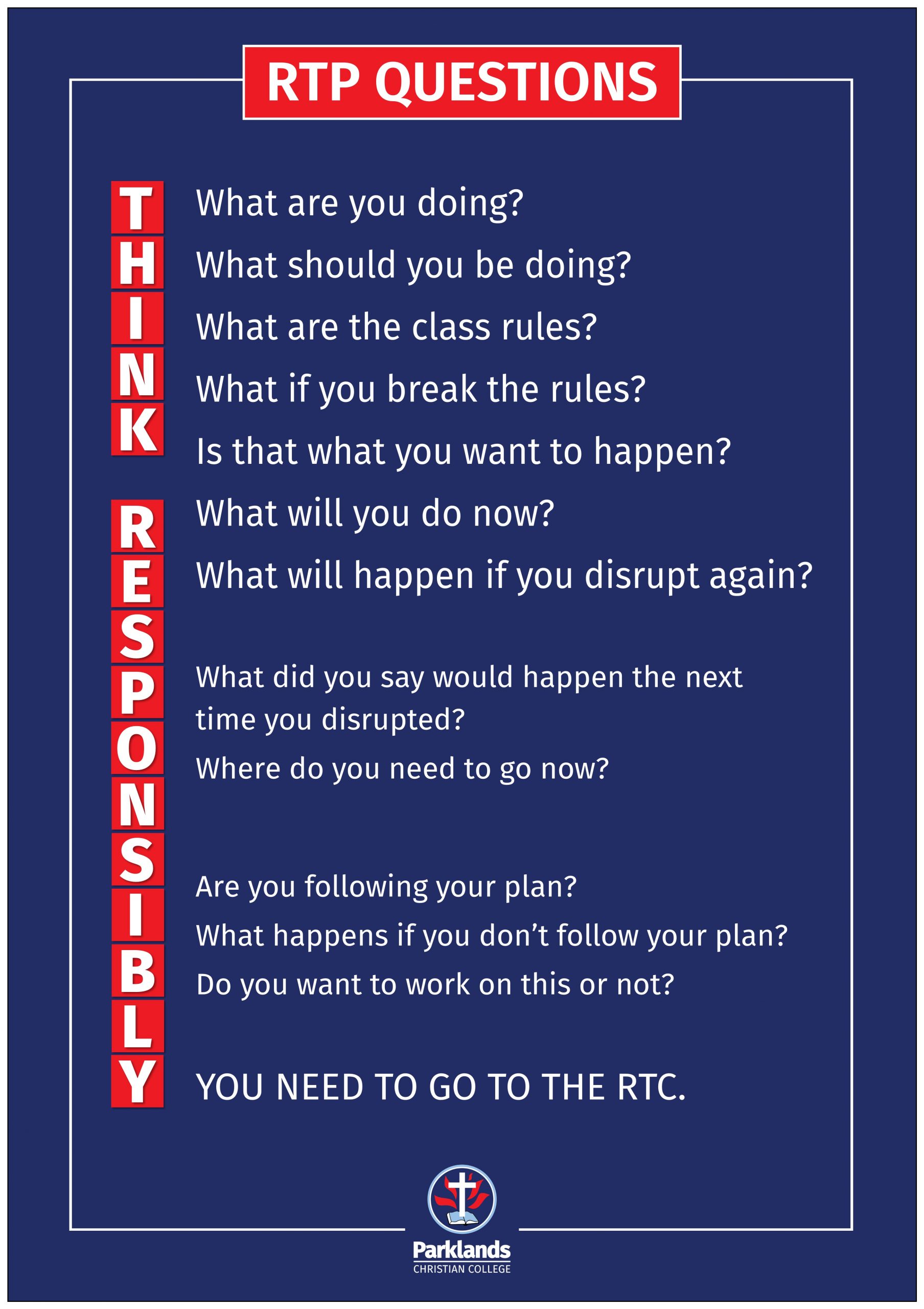B
Behaviour Education
Fear and punishment do work to momentarily control the actions of another person, as they are trying to stop the fear and preserve themselves. However, when you remove the bit stick of punishment they go back to what they were doing. When a student is in fear mode they will not be learning they will be focusing on protecting themselves from what they are fearful of. Such as the punishment. This is where lying is introduced to a student’s behaviour. Out of a sense of safety from the fear of punishment, they will lie about what they have done or they will say it was an accident to attempt to lessen the punishment.
Love has a unique attribute that allows us to hold to good boundaries and build relationships that allows us to maintain a safe environment for students to learn from their mistakes. One of the misconceptions about RTC is that it is for ‘naughty’ students and is therefore a punishment and detention. This is not true; rather RTC is a place to learn from our mistakes, grow in understanding and to understand responsibility. We avoid using words like detention and bad or naughty and certainly don’t associate ‘fear’ with the RTC.
A student may use the RTC for the following:
- Own their behaviour and devise strategies to respect the right of others to learn
- Learn from their mistakes and grow from them
- Complete homework, unfinished class work and assignments
- Study quietly and use the computers
- Print assignments
- Sort out uniform infringements
- Discuss any difficulties regarding staff or fellow students
- Process non-RTP behaviours
Through using Behaviour Education, we can help build the confidence of students by teaching them how to think responsibly, learn from their mistakes and feel good about themselves. One way of doing this is to incorporate quality time. By providing quality time with these students we establish relationships, which is essential in the building up of self-worth and the ability to succeed. So when things do go wrong, or a problem arises, the student can learn to achieve their goals whilst respecting other students’ right to learn.
- We take time out to listen to them as behind every behaviour there is a need. We take the time to learn this need and work with them about how/when to be able to achieve their need whilst being respectful of others.
- We spend quality time with that student.
- We demonstrate respect, honour and positive communication with all students.
More information:
Responsible Thinking Classroom
The RTC is down stairs from Student Services


RTP Prep Plan
RTP Lower Primary Plan
RTP Upper Primary Plan
RTP Secondary Plan
RTP Prepared for Class Plan
RTP Return to School Plan
RTP Questions & Answers
RTC Primary Q&A
RTC Secondary Q&A
Common Myths about RTC
Tips to Using RTP @ Home
RTP Other Resources
Our Rules Poster
RTP Questions Poster
RTP Student Statement
RTP Flowchart
RTP Information Pack


